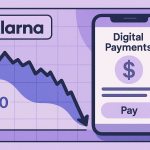
The USD/JPY exchange rate continued its strong downward trend this week as concerns about the US and the greenback accelerated. It has slipped in the last eight consecutive days, and is hovering at its lowest point since May 7 of this year. Also, the pair remains 10% below the highest point this year.
US and US dollar concerns remains
The USD/JPY pair retreated this week as investors remained concerned about the US economy following Moody’s decision to slash the US credit rating last week.
In a note, the agency moved the credit rating from Triple-A to Aa1, pointing to the soaring US debt, rising interest payments, and the mismanagement of the economy by politicians in Washington.
This decision was notable because the US lost the final Triple-A rating, which may lead to higher bond yields. Indeed, the 30-year yield has jumped to 5.10%, while the 10-year has moved to 4.60%.
The rating downgrade had an immediate impact in the stock market as investors dumped US assets. Data shows that the Dow Jones Industrial Average and the S&P 500 indices fell by 815 and 95 points, respectively
The credit rating downgrade has not slowed the Trump administration and Republicans in Congress down. The two have continued to negotiate on the so-called “Big, Beautiful Bill”, which aims to cut taxes and some spending.
Analysts anticipate that the bill will add between $4 trillion and $5 trillion in the deficit in the next decade. This is happening even as the US public debt continues rising, with the figure standing at $36.8 trillion. In 2020, the US had a public debt of less than $22 trillion.
In theory, rising debt load is not bad as long as the economy is growing. In reality, analysts anticipate that the economy will continue slowing this year because of Donald Trump’s tariffs.
Therefore, analysts anticipate that the Federal Reserve will embrace a wait-and-see approach when making its next interest rate decisions. Some analysts anticipate the next rate cut will happen in the September meeting, while others don’t see a cut happening this year.
Japan inflation data ahead
The USD/JPY pair dropped as investors reacted to the latest flash manufacturing and services PMI data. According to Jibun Bank, the manufacturing PMI figure rose from 48.7 in April to 49.0 in May, while the services figure dropped from 52.4 to 50.8.
The closely-watched composite PMI figure dropped from 51.2 to 49.8. These numbers mean that the economy is slowing as the impact of Trump’s tariffs emerged.
The next key catalyst for the pair will come out on Friday when Japan publishes the next consumer inflation data. Economists expect the data to reveal that the headline Consumer Price Index (CPI) rose from 3.6% to 3.7%, while the core figure rose from 3.2% to 3.3%.
These numbers and expectations explain why Japan bond yields have surged. Still, analysts expect that the Bank of Japan will maintain rates steady as over two-thirds of businesses ask the bank to pause.
USD/JPY technical analysis
The daily chart shows that the USD to JPY exchange rate has been in a strong downtrend in the past few weeks. It has crashed from a high of 158.85 in January to the current 143.30.
The pair has remained below the 50-day and 100-day Exponential Moving Averages (EMA). There are signs that it has formed an inverse cup-and-handle pattern, a popular bearish continuation pattern.
Therefore, the pair will likely continue falling as sellers target the key support at $139.80, its lowest point this month.
The post USD/JPY forecast: risky pattern points to more Japanese yen surge appeared first on Invezz






